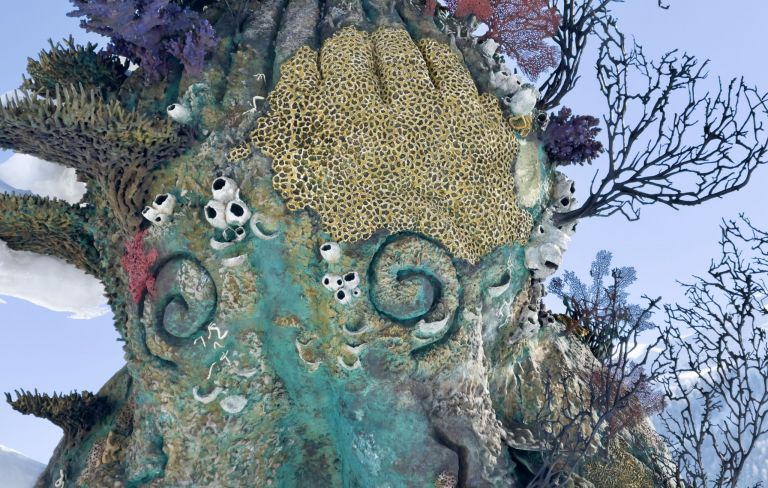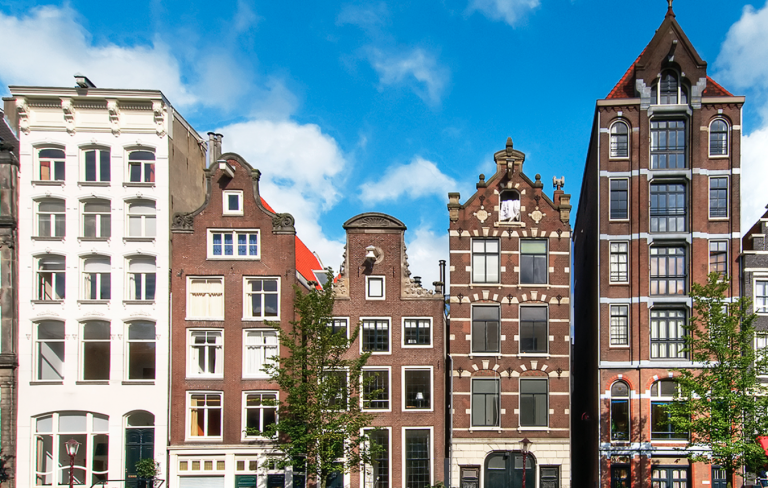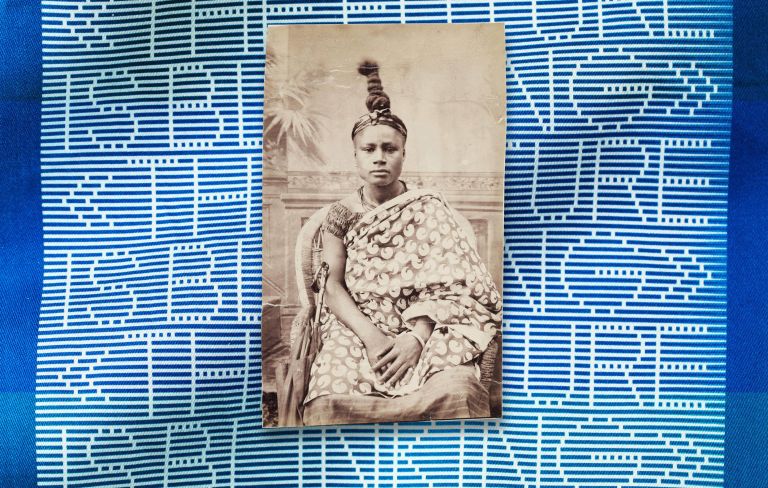For the new exhibition “Architectural Icons Seen anew” at the Pavillon Le Corbusier, seven contemporary photographers visited seven iconic buildings by the architect and artist in France and Switzerland. It invites the public to discover Le Corbusier’s architecture from new perspectives.
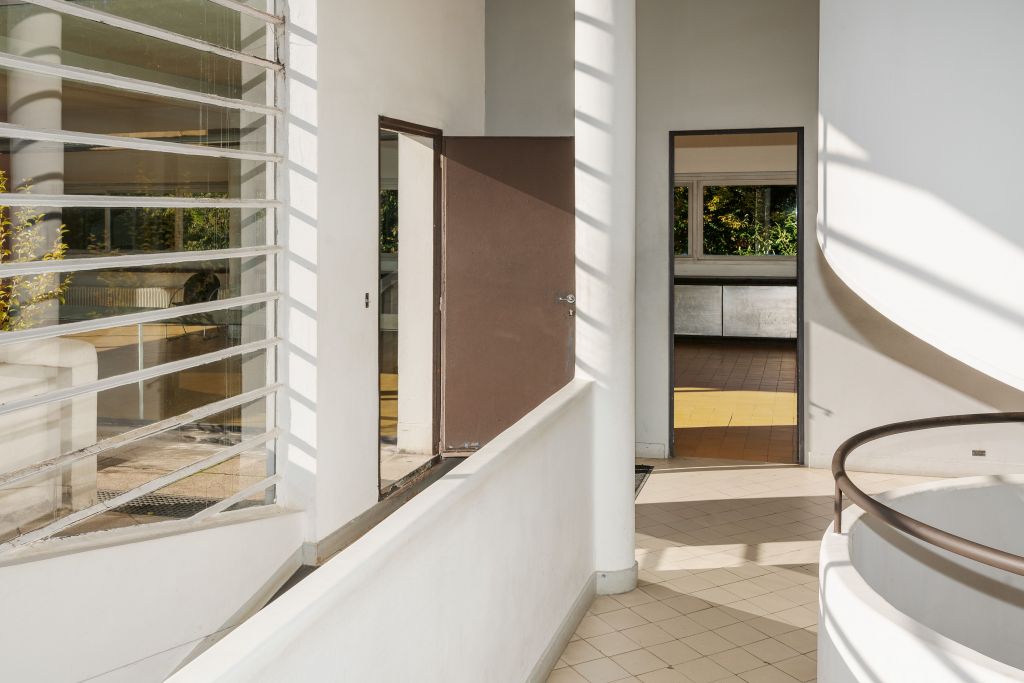
The upper floor is accessed via a ramp and stairs, Villa Savoye, Poissy, France, 2021, Photo: Arthur Zalewski
The architect and artist Le Corbusier designed buildings that have gone down in architectural history as icons. Le Corbusier made targeted use of photography to propagate his talent and his visions. The photographers commissioned by him during his lifetime contributed significantly to the reception of his architecture. But how does the medium of photography encounter Le Corbusier’s built work today? On the occasion of the current exhibition, seven contemporary photographers visited seven key works by Le Corbusier in autumn 2021, buildings from different creative phases of the architect.
The 7 Photographers and the 7 Icons
Jürg Gasser was a guest at the villa “Le Lac” (1923-1924), the small house for Le Corbusier’s parents in Corseaux on the shores of Lake Geneva. Arthur Zalewsky photographed Le Corbusier’s built manifesto, the Villa Savoye (1928-1931) in Poissy near Paris. Katharina Bayer visited the “living machine”, the Unité d’Habitation (1946-1952) in Marseille. The large apartment block stands as a vertical garden city for the reconstruction after the Second World War. Seraina Wirz travelled to the south of France to the Côte d’Azur and photographed the Cabanon (1951-1952), Le Corbusier’s summer residence in Roquebrune-Cap-Martin. Lea Meienberg photographed the Notre Dame-du-Haut Chapel (1951-1955) in Ronchamp near Belfort. A building in which Le Corbusier first sought to deal with mass and light instead of the smooth surfaces and homogeneous clarity of the 1920s and early 1930s. Rasmus Norlander visited the monastery of Sainte-Marie de La Tourette (1953-1960), the brutalist exposed concrete building of the Dominican Order in Éveux near Lyon. And Erica Overmeer’s contribution shows a photographic portrait of the Pavillon Le Corbusier (1963-1967). The restaurant in the exhibition then also stands as the last design ready for construction that was executed in Le Corbusier’s rich and always diverse oeuvre.
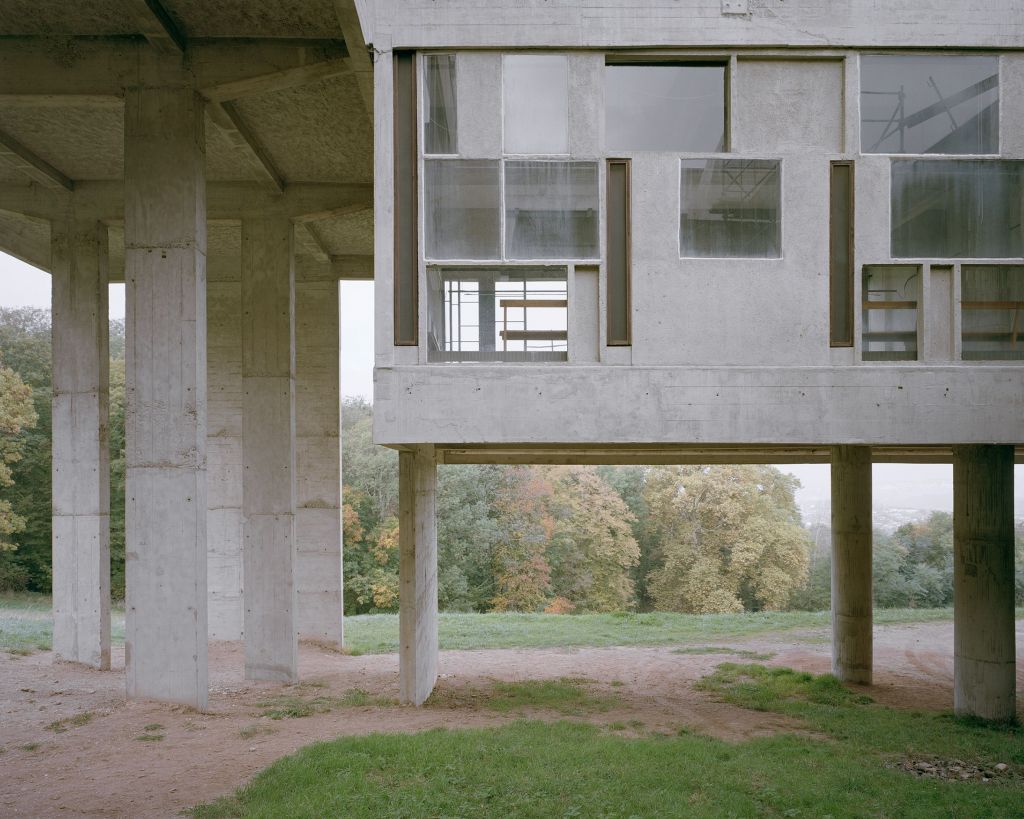
Building on wall panels and supports, Sainte-Marie de La Tourette, Éveux, France, 2021, Photo: Rasmus Norlander
On the ground floor, visitors are greeted by seven white architectural models of the photographed buildings. They are identical in scale and materialisation. The subjective photo portraits of the building icons are distributed over the floors of the exhibition building. In the basement of the Pavillon Le Corbusier, short film portraits of the photographers offer an insight into their studios. They convey the different biographies and approaches as well as their individual experiences when visiting the buildings in autumn 2021.
The main exhibit: the pavilion
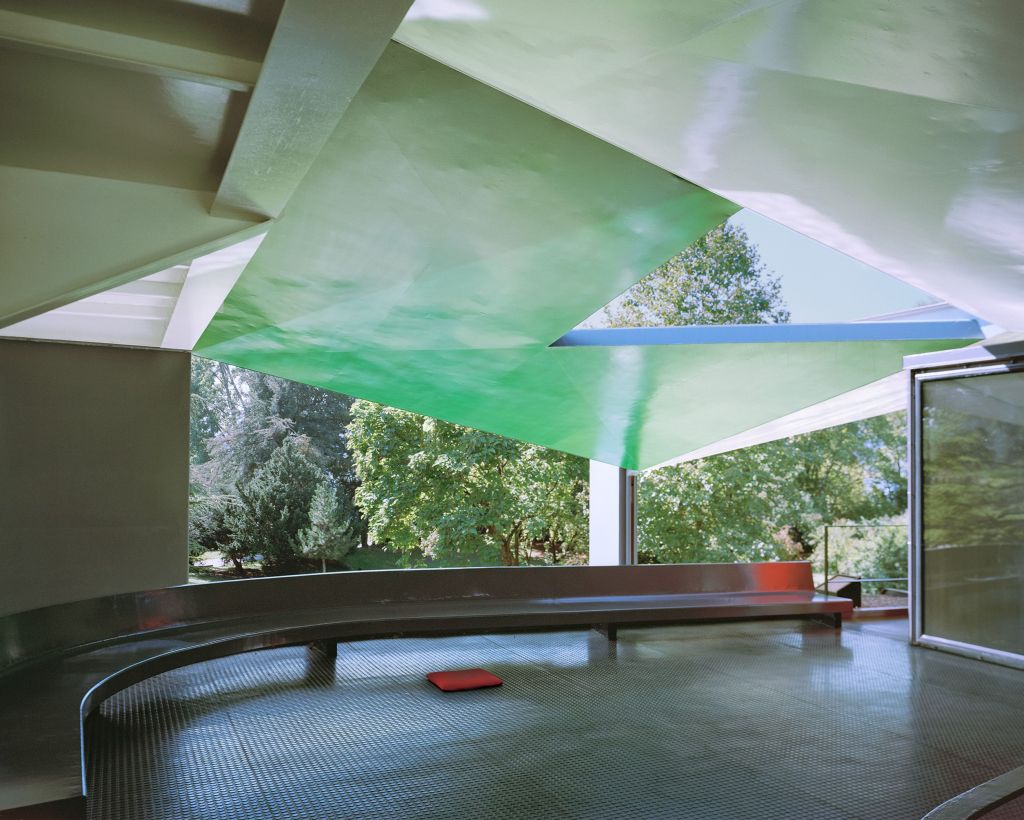
Roof terrace, Pavillon Le Corbusier, Zurich, Switzerland, 2021, Photo: Erica Overmeer
Since its opening in 1967, the Pavillon Le Corbusier has been operated as an exhibition venue to communicate Le Corbusier’s work and ideas to a broad public. In keeping with this spirit, the Museum für Gestaltung Zürich has been running the Pavillon Le Corbusier as a museum open to the public since spring 2019 on behalf of the owner, the City of Zurich. Visitors can walk through and discover the pavilion on their own. Covering around 600 square metres and four storeys, the pavilion offers a variety of views and insights. The small roof terrace with an unobstructed view of the Zürichhorn and the lake is also accessible.
Publication
Architekturikonen neu gesehen / Architecture Icons Revisited (D/E); Museum für Gestaltung Zürich (Ed.) / Simon Marius Zehnder, Danaé Panchaud; Available in the museum shops and in the eShop: eshop.museum-gestaltung.ch (CHF 10)
Events
All the latest details regarding guided tours, workshops, talks and concerts, as well as the safety rules to be followed, can be found on the website: pavillon-le-corbusier.ch
Öffnungszeiten
From 29 April to 27 November 2022 on Tuesday to Sunday 12-18 hrs, Thursday 12-20 hrs: on public holidays: pavillon-le-corbusier.ch/feiertage in the Pavillon Le Corbusier, Höschgasse 8, 8008 Zürich
